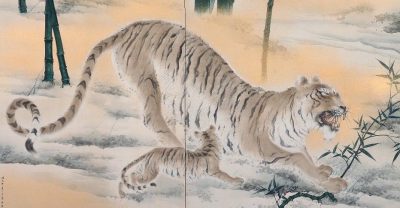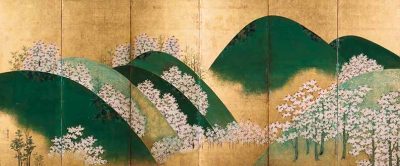Japanese Art and Edo to Contemporary
Lee Jay Walker
Modern Tokyo Times

The artist Kishi Chikudo (1826–1897) began his artistic journey within the disciplined embrace of the Kano school, where form, lineage, and classical technique shaped his early vision. Over time, however, he gravitated toward the Kishi aesthetic, absorbing its poetic sensibilities and gradually transforming this tradition into something distinctly his own.
Under the guidance of the esteemed Nakajima Antai, Chikudo first learned the precision and reverence demanded of his craft. Later, his move to Kyoto brought him under the tutelage of Kano Eigaku, allowing him to refine his technique within a period of relative stability in the Kano tradition. Yet it was precisely this continuity—rooted in discipline and lineage—that ultimately enabled Chikudo to step beyond inherited forms and cultivate a new artistic path illuminated by his personal vision.

The artist Watanabe Shikō (1683–1755) entered the world already touched by an uncommon artistic sensibility. Living amid the flourishing Edo Period, he drew inspiration from a cultural landscape shaped by courtly elegance, religious depth, and the vibrant visual rhythm that would later crystallize in the ukiyo-e tradition.
Born in the ancient city of Kyoto, Shikō absorbed the spiritual and aesthetic currents flowing through the region. The sacred heights of Kōyasan, the venerable temples of Nara, the storied grounds of Negoro-ji, and countless other cultural sanctuaries infused his artistic spirit. These places—together with the refined atmosphere of his native Kyoto—provided the wellspring from which Shikō shaped his distinctive and luminous artistic world.

The latest work by contemporary Japanese artist Sawako Utsumi, titled “The Horizon and Peace of Mind,” reaches far beyond the canvas. This evocative piece dissolves the boundaries of distance and time, drawing the viewer into a realm where silence, memory, and nature converge. In its sweeping gradients and subtle depths, the artwork captures those fleeting, awe-inspiring moments when the natural world seems to pause—inviting the soul to breathe, reflect, and rediscover tranquility.
Utsumi pays homage to the timeless elegance of Kamisaka Sekka (1866–1942), yet she does so with a quiet daring—introducing subtle shifts in color and atmosphere that breathe new life into his classical sensibilities. In her vision, the horizon becomes a sanctuary for the weary soul, a place where the mind is gently renewed by the embrace of nature.
For Utsumi, the horizon—and the delicate flora that dwell along its edge—is never fixed. It is an illusionary frontier, shaped not only by pigment but by perception itself. Her tender deviations hint at a profound truth: even when gazing upon the same scene, no two eyes see identically, and no two hearts feel in the same way. Thus, her art becomes a meditation on individuality, memory, and the ever-shifting landscapes of the human spirit.
https://fineartamerica.com/featured/the-horizon-and-peace-of-mind-sawako-utsumi.html – The Horizon and Peace of Mind

Modern Tokyo News is part of the Modern Tokyo Times group
http://moderntokyotimes.com Modern Tokyo Times – International News and Japan News
http://sawakoart.com – Sawako Utsumi’s website and Modern Tokyo Times artist
https://moderntokyonews.com Modern Tokyo News – Tokyo News and International News
PLEASE JOIN ON TWITTER
https://twitter.com/MTT_News Modern Tokyo Times
PLEASE JOIN ON FACEBOOK